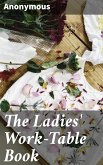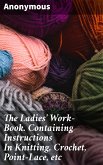In "The Ladies' Knitting and Netting Book," Miss Watts presents a comprehensive exploration of women'Äôs crafts in the late 19th century, merging practical advice with social commentary. The book is interspersed with vivid illustrations and detailed instructions, capturing the intricacies of both knitting and netting. Watts deftly employs a straightforward yet engaging literary style, making complex techniques accessible to a broader audience. Set against a backdrop of Victorian values and the burgeoning women's movement, the book reflects on the significance of these crafts as a form of artistic expression and domestic empowerment, transcending mere practicality to engage with themes of femininity and creativity. Miss Watts, a noted patron of women's crafts and education, was deeply influenced by her own experiences in the knitting circles of her time. Her work emerges from a rich tradition of craft literature, yet it is distinguished by her aim to elevate women's skills and promote artistic fulfillment. Her background in both textile arts and community work informs her insights, enabling her to articulate the nuanced relationship between women and their crafts. This book is an essential read for anyone interested in the social history of the 19th century, particularly in relation to women's roles and creativity. "The Ladies' Knitting and Netting Book" not only preserves valuable techniques but also captures the spirit of an era, making it a timeless resource for crafters and historians alike.
Dieser Download kann aus rechtlichen Gründen nur mit Rechnungsadresse in A, B, BG, CY, CZ, D, DK, EW, E, FIN, F, GR, H, IRL, I, LT, L, LR, M, NL, PL, P, R, S, SLO, SK ausgeliefert werden.









